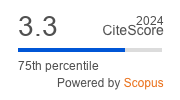Article | Open Access
| Ahead of Print | Last Modified: 19 November 2025
The Halting of Everyday Media Practices in Swedish Detention Centres: A Physical, Social, and Digital Exclusion
| Views: | 201 | | | Downloads: | 132 |
Abstract: In line with previous research, this article starts from the awareness that ubiquity and mobility, central features of migrants’ transnational lives, are sustained by everyday digital media practices. It aims to investigate what happens when these media practices can no longer be carried out due to circumstances beyond the individuals. The research context is the Swedish detention system, which in some cases breaks the migration trajectories and forces individuals to wait for an unwanted return. Detention centres are highly mediatized spaces where the rapid digitalization that characterizes societies is forced to slow down to a standstill for migrants. This situation marks the return of old media forms that become new, such as dumb phones and paper letters. The study is based on face‐to‐face interviews with detained and formerly detained migrants conducted between 2022 and 2024 in Sweden and reported here through the method of ethnographic vignettes. Offline and online practices in detention are explored to understand whether they can still guarantee the social inclusion that digitalization outside had made possible, and that here can be described as a process that follows different speeds and directions depending on the power exercised through it and its aims, leading to a counter movement. I therefore argue that there is a double exclusion, first from the country through the instrument of detention, and thus also expulsion from society understood as sociality, and this through counter‐digitalization.
Keywords: detention; digitalization; disconnection; exclusion; migrants
Published:
Ahead of Print
Issue:
Vol 14 (2026): Digitalization and Migration: Rethinking Socio-Economic Inclusions and Exclusions (In Progress)
© Miriana Cascone. This is an open access article distributed under the terms of the Creative Commons Attribution 4.0 license (http://creativecommons.org/licenses/by/4.0), which permits any use, distribution, and reproduction of the work without further permission provided the original author(s) and source are credited.


